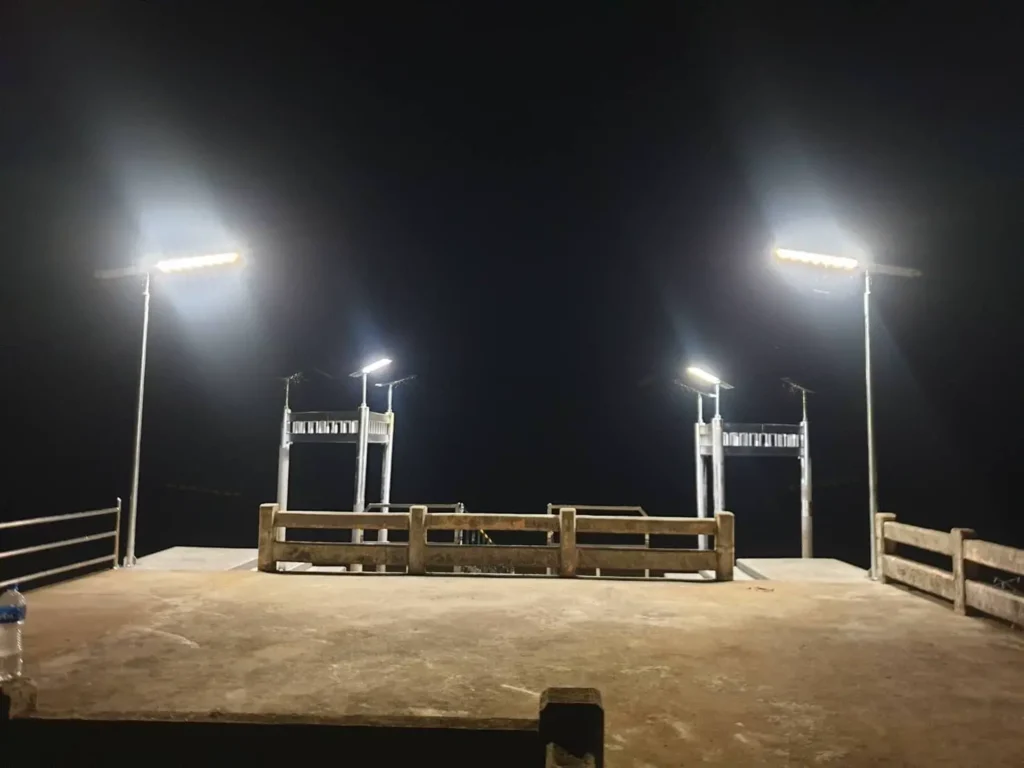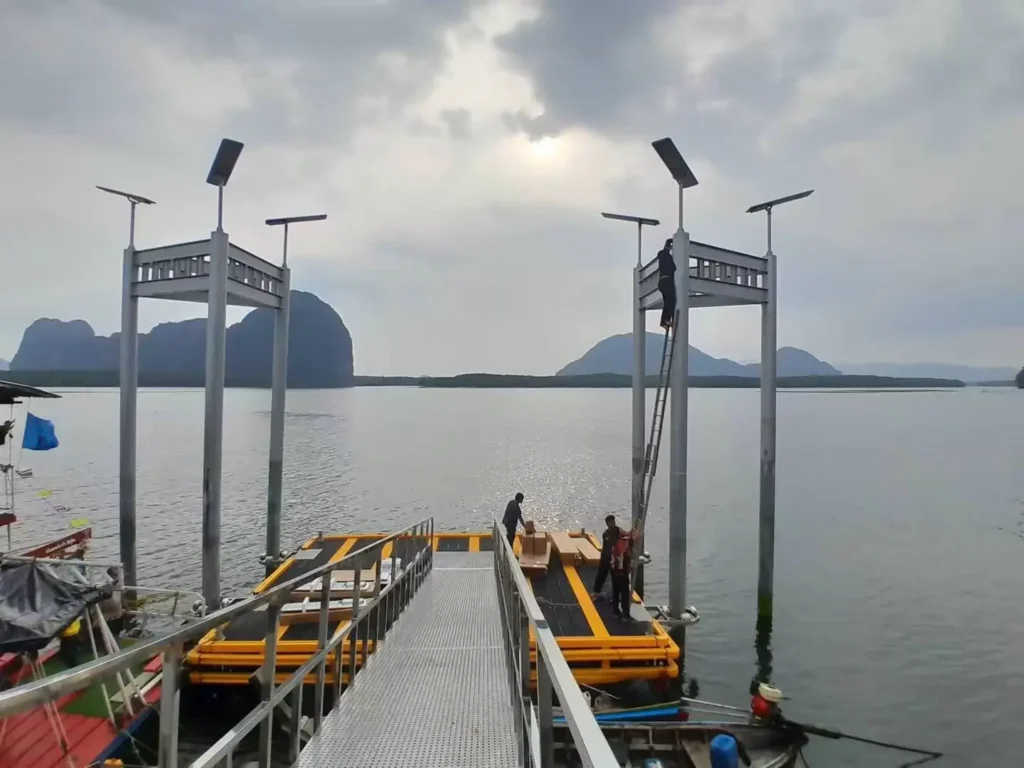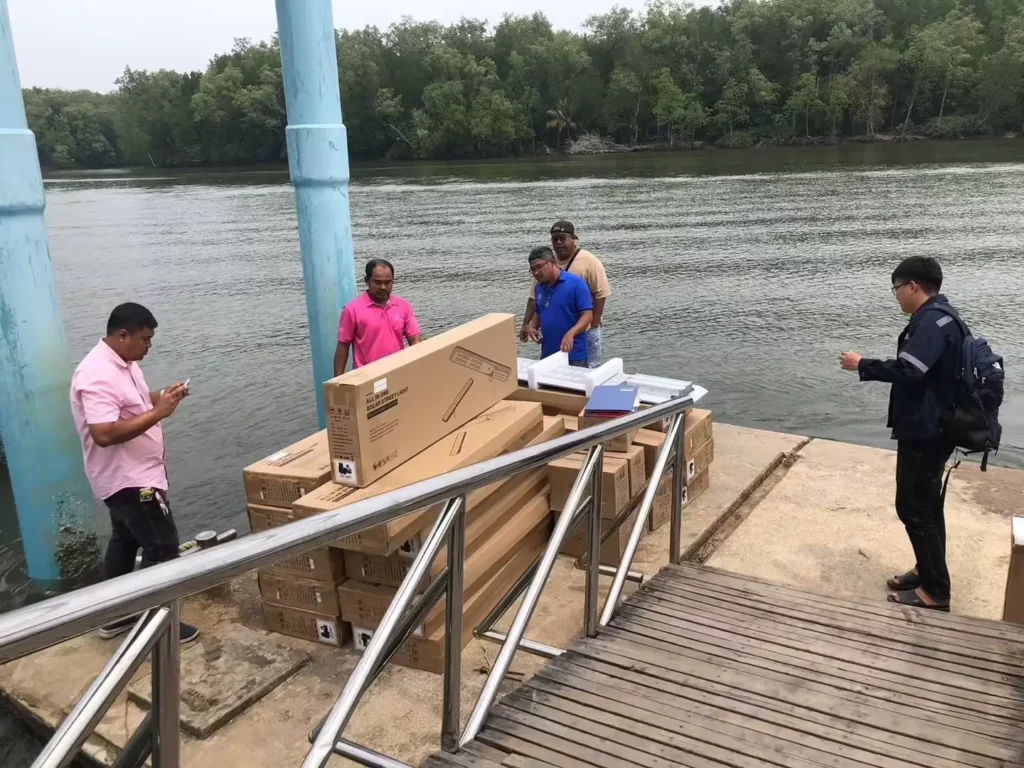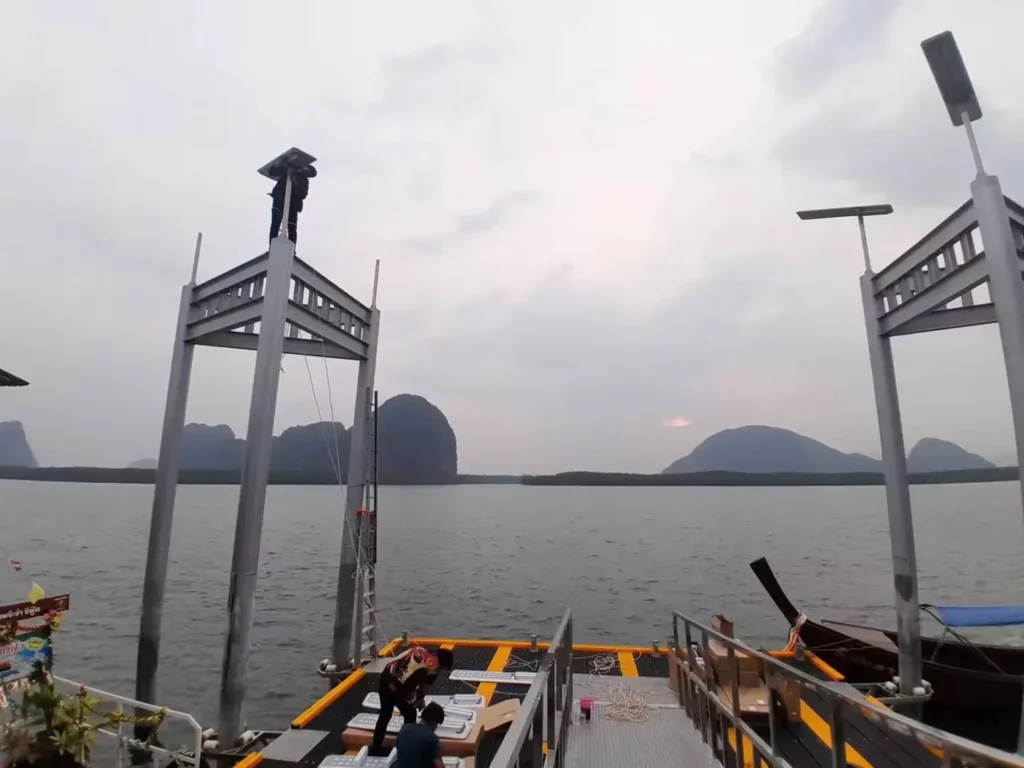Amidst the global wave of sustainable development, solar lighting technology is becoming the preferred solution for upgrading coastal infrastructure. As a leading brand in solar street lighting, SRESKY has delivered efficient and reliable illumination systems for Thailand’s eastern coastal regions through its Atlas and Thermos series products. This project successfully addresses nighttime lighting challenges in remote docks and public areas, showcasing exceptional adaptability to high-salt fog and humid environments.
I. Project Background and Needs Analysis
1.1 Project Background
Thailand’s eastern coastal region is renowned for its beaches, fisheries, and thriving tourism industry. Covering areas like Chonburi and Rayong provinces, it attracts millions of visitors annually, fueling rapid economic growth. However, expanding tourism infrastructure has intensified nighttime lighting issues at remote piers, public platforms, and coastal trails. Traditional grid-dependent lighting systems face serious limitations: grid coverage is below 20% in many areas, while cable installation across complex terrain can cost tens of thousands of dollars per kilometer. High winds, heavy rainfall, and salt fog corrosion further complicate maintenance, restricting nighttime activities and creating safety risks.
The client, the Eastern Seaboard Development Agency (ESDA), aimed to enhance regional competitiveness through modern lighting upgrades. As a global solar lighting specialist with experience in over 3,500 international tenders, SRESKY has once again proven its adaptability in tropical coastal environments. The installation covered multiple piers and public spaces, deploying eight solar streetlights to create a safe and eco-friendly nighttime landscape.
1.2 Core Requirements and Challenge Analysis
Through detailed environmental research, the project identified four key requirements common to coastal regions:
-
High Adaptability: With annual humidity exceeding 85% and strong salt spray, lighting systems must have exceptional corrosion resistance and waterproofing. The project required IP65 waterproofing/dustproofing and IK08 impact resistance standards.
-
Off-Grid Power: Remote docks without grid access demanded self-sustaining solar systems. Charging efficiency had to exceed 21% to prevent nighttime blackouts during cloudy weather.
-
High Energy Efficiency: High-brightness, low-power LED fixtures ensured optimal illumination while saving energy. Brightness levels ranged from 2000LM to 10000LM, with energy efficiency exceeding 230 lm/W.
-
Smart Management: Automated brightness adjustment based on ambient light and foot traffic extended runtime. PIR sensors covered a 120° range up to 8 meters, with multiple modes achieving over 70% energy savings.
These requirements aligned with Thailand’s “Green Thailand” strategy of balancing economic growth with environmental protection. The SRESKY solution addressed these challenges effectively.
II. Technical Solution Design
2.1 Core Technical Highlights
The solution’s strength lies in SRESKY’s patented technologies, tailored for coastal conditions:
-
ALS 2.3 Adaptive Lighting System: Adjusts brightness according to battery charge and weather conditions. Even after 10 consecutive cloudy days, it maintains basic brightness levels for safety.
-
TCS Intelligent Temperature Control System: Regulates charging/discharging between 0°C–45°C and -20°C–60°C, extending battery life and ensuring stability in hot, humid coastal climates.
-
High-Efficiency LED & PIR Sensor: Equipped with OSRAM 3030 LEDs (up to 230 lm/W) and a 120° PIR sensor with three operating modes, enabling customized lighting and over 70% energy savings.
2.2 Installation and Maintenance
-
Modular Design: Components can be replaced directly on the pole in under 30 minutes by one person, reducing costs.
-
High Protection Rating: IP65 waterproofing, IK08 impact resistance, and a rust-resistant aluminum alloy + PC body ensure durability for over five years.
These features secured global tender approval and made the solution suitable for tourism, fisheries, and public infrastructure projects.
III. Project Implementation and Deployment
The project was executed in four stages, completed within two weeks:
3.1 Preliminary Preparation
Lighting simulations guided product selection: Atlas high-power models for main piers, and Thermos for auxiliary areas.
3.2 Transportation and Logistics
Eight solar streetlights and accessories were shipped with moisture-proof packaging, achieving zero transport loss.
3.3 Commissioning and Operation
Post-installation testing verified PIR and ALS functions. LED indicators displayed battery status for convenient monitoring.
IV. Project Outcomes and Impact
4.1 Social and Economic Value
-
Enhanced Nighttime Safety: Docks and public spaces were brightly illuminated, reducing accident risks by 30% and improving visitor satisfaction.
-
Improved Living Environment: Better nighttime spaces benefited fishermen, tourists, and residents, stimulating local nighttime economies.
-
Sustainability Achieved: Solar power reduced annual carbon emissions by over 5 tons, supporting Thailand’s sustainability goals.
-
Cost Reduction: Eliminating grid installation and electricity fees ensures the project pays for itself in under five years.
4.2 Technical and Brand Impact
The success of SRESKY’s Atlas and Thermos series highlighted their durability in harsh coastal conditions, earning recognition from the Thailand Development Authority and positioning the project as a regional benchmark.
Summary
This solar lighting project along Thailand’s eastern coast demonstrates SRESKY’s advanced solar streetlight technology as an efficient, reliable, and eco-friendly solution. Beyond improving safety and public infrastructure, it proves the vast potential of solar technology in sustainable development, offering a valuable reference for future coastal projects worldwide.



